Soc Trang sets 2030 targets to complete urban system
Soc Trang’s urban landscape has seen positive changes in recent years, with an increase in the quantity and quality of urban areas, enhancing the life of residents. Several areas have capitalised on their potential, creating momentum for socioeconomic development and restructuring the economy.
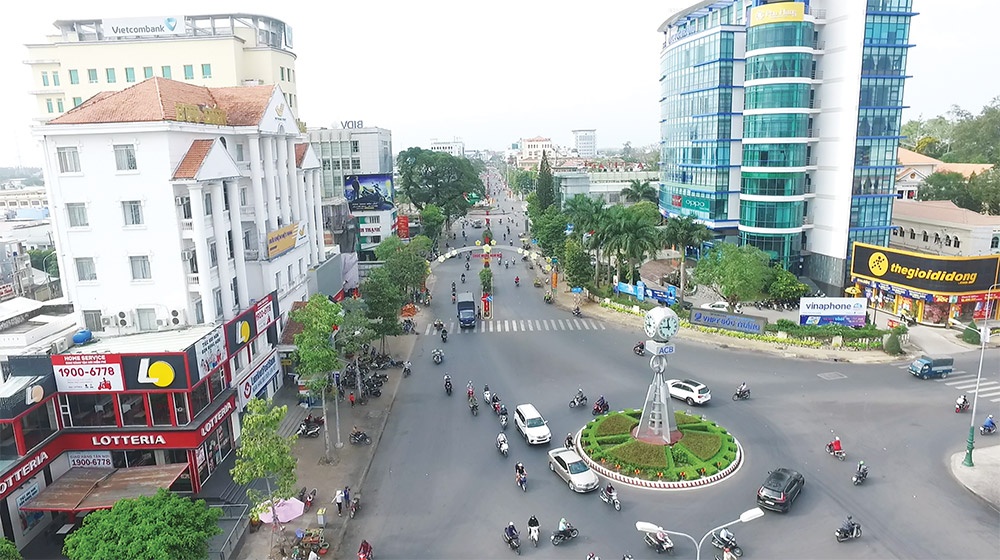 |
| Soc Trang sets 2030 targets to complete urban system |
Currently, the province is home to 19 urban areas, including second-tier Soc Trang city, the two fourth-tier towns of Vinh Chau and Nga Nam, and 16 fifth-tier district-level urban areas. When the province was re-established in 1992, Soc Trang only had seven urban areas.
In recent years, Soc Trang has focused on mobilising diverse resources to beef up infrastructure and urban development. The overhaul of urban areas has received constant attention from Soc Trang Party Committee and People’s Committee, with relevant departments mandated to carry out these efforts.
Soc Trang city is currently implementing an urban upgrading subproject, funded by the World Bank, with total investment of around $44 million. This sits alongside Belt Road 1 and 2 as well as a resettlement area initiative, to name but a few. Other urban areas have also developed plans for renovation and upgrading.
Widespread growth
Urban spaces are increasingly being improved and expanded, resulting in modern and bustling urban landscapes, especially in Soc Trang city and the towns of Vinh Chau and Nga Nam. Additionally, many new urban area and housing projects have been developed across the province.
Soc Trang is currently home to about 40 commercial housing projects, offering a diverse range of residential types and amenities. They meet the needs of residents and bring a facelift to urban areas. The urban transportation infrastructure in different towns and Soc Trang city has been invested in and upgraded to meet residents’ transport needs, helping to beautify the landscape.
Alleys in urban areas have been renovated and widened, drainage systems have been repaired, and green spaces and lighting along major roads are improved, with traffic intersections and safety systems receiving regular maintenance. The percentage of urban residents with access to clean water through centralised water has also reached over 90 per cent.
The surface water treatment plant scheme at the An Nghiep Industrial Park, with a capacity of 10,000 cubic metres a day, has been operational since 2015, with a total investment of nearly $2.2 million. This project is part of a climate change and water supply initiative for the Mekong Delta, funded by a Dutch government grant and helping to meet the increasing water demands of residents and ensuring water security.
Soc Trang has also invested in a first-phase wastewater collection and treatment system with a capacity of over 13,000 cu.m per day, with an investment of over $8 million. The second phase will have a treatment capacity of 24,000 cu.m per day and cost $17.8 million, funded by a concessional loan from the German government.
Additionally, a decentralised wastewater treatment plant in Tran De district has a capacity of 26 cu.m per day. The percentage of urban wastewater collected and treated to meet standards now approximates 17.8 per cent.
New East Sea sub-region centre
In light of Soc Trang’s master plan for 2021-2030, the city aims to develop an urban system consisting of 25 tiered urban areas by 2030. One will feature first-tier status, two with third-tier, nine with fourth-tier, and the remainder with fifth-tier status. By 2050, the system will expand to over 30 urban areas,
Soc Trang city is positioned to become an economic centre of the East Sea sub-region, focusing on industries such as agricultural and aquatic product processing, clean energy, and tourism.
The city aims to grow into the political, economic, cultural, social, and educational centre of the province, ensuring national security and defence. Plans also underway to study the expansion of administrative areas, aiming for Soc Trang city to meet first-tier city criteria directly under the provincial management by 2030.
Meanwhile, Vinh Chau town is set to become one of the central urban areas in Soc Trang, with priority given to the development of trade, industry, services, ecological tourism, agriculture, forestry, fishery, and marine economy such as offshore wind, aquaculture, and marine logistics services.
Nga Nam town is positioned to become the inland region centre southwest of Soc Trang, prioritising the development of trade, services, and tourism linked to the advancement of agriculture through sci-tech, waterway tourism, and traditional floating markets.
By 2030, Tran De district aims to meet the fourth-tier town criteria. Its spatial development will be shifted towards Soc Trang city and along the Hau River. It will become a hub for aquaculture and fishing, providing logistics services for the entire East Sea coastal region.
The plan also outlines research for the development of other urban areas commensurate with the province’s potential and aligned to the urban classification and overhaul plans established for each urban area in the provincial master plan. This aims to effectively leverage the advantages of each urban area with the province’s advantages, which include more than 72km coastline and about 70km along the Hau River.
Currently, a series of key infrastructure schemes aimed at connecting intra-provincial and inter-regional transportation are underway in the province.
Among these, the highlight is a component project engaging approximately 58km crossing Soc Trang as part of the first-phase of the Chau Doc, Can Tho, Soc Trang expressway, and the East-West economic corridor, which encompasses 56.6km.
The latter helps connect Nga Nam town, Thanh Tri district, My Xuyen district, and Vinh Chau town in Soc Trang with diverse localities in the delta region, including Hau Giang, Bac Lieu, and Ca Mau.
Once operational, these projects will create momentum to spur the province’s socioeconomic development, opening up economic development spaces and forming new urban, trade-services, and industrial zones, helping to speed up provincial urbanisation.
According to the Mekong Delta master plan for this decade, Soc Trang city is designated as the economic centre of the East Sea coastal sub-region. It will serve as a hub for aquaculture, fishing, and seafood exports, a centre for agricultural and aquatic product processing and clean energy, and a tourist area.
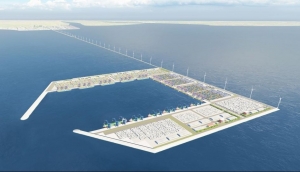 | Soc Trang seeks feasibility report on Tran De Seaport Soc Trang People’s Committee is proposing developing Tran De Seaport under a Public-Private Partnership (PPP) and, to promote the venture as an investment opportunity, is seeking the Ministry of Transport’s approval to use local budgetary funds to draft a feasibility report for its construction. |
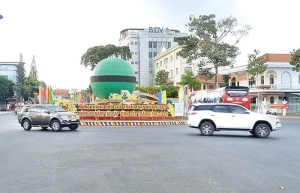 | Soc Trang takes on gateway mantle Soc Trang is making efforts to become a well-developed province in the Mekong Delta, with the modern and sustainable development of manufacturing, commerce, and services this decade. |
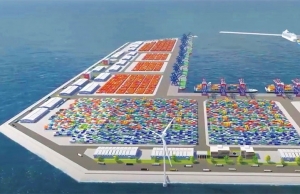 | Soc Trang lays out strategy for seaport’s special renovation The rejuvenation of Tran De Seaport will play an important role in the socioeconomic development of the entire Mekong Delta region, with a spillover effect on other industries. |
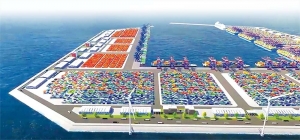 | Soc Trang to become trade gateway for Vietnam's south Tran De Port has been classified as a Type III seaport, belonging to the Group 5 of seaports, meaning potential for advancement into a special seaport as it forms the gateway port for the Mekong Delta region, according to the decade-long master plan for the development of Vietnam's seaport system approved by the Prime Minister Pham Minh Chinh. |
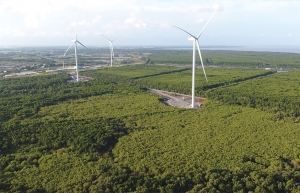 | Soc Trang province bagging rosy results Soc Trang province in Vietnam’s Mekong Delta region has secured buoyant performance across the board in the first half of this year, with a constantly improving investment environment. |
What the stars mean:
★ Poor ★ ★ Promising ★★★ Good ★★★★ Very good ★★★★★ Exceptional
Related Contents
Latest News
More News
- Global partnerships key to Vietnam’s IFC development (December 26, 2025 | 16:18)
- Vingroup pulls out of bid to invest in North-South high-speed railway (December 26, 2025 | 11:42)
- Strengthening supply chains through trade promotions and customs reform (December 24, 2025 | 14:00)
- PM orders investment model for North–South high-speed rail (December 22, 2025 | 17:43)
- LS Eco Energy to invest in Vietnam rare earth sector (December 22, 2025 | 17:31)
- Government moves to establish International Financial Centre (December 21, 2025 | 21:00)
- Vietnam's IFC to target global investment flows (December 21, 2025 | 18:00)
- Two national hospitals expand capacity with new facilities (December 20, 2025 | 09:00)
- Ha Tinh breaks ground on major Vingroup industrial and energy projects (December 19, 2025 | 18:24)
- EVN launches major power infrastructure projects nationwide (December 19, 2025 | 18:17)

 Tag:
Tag:





















 Mobile Version
Mobile Version